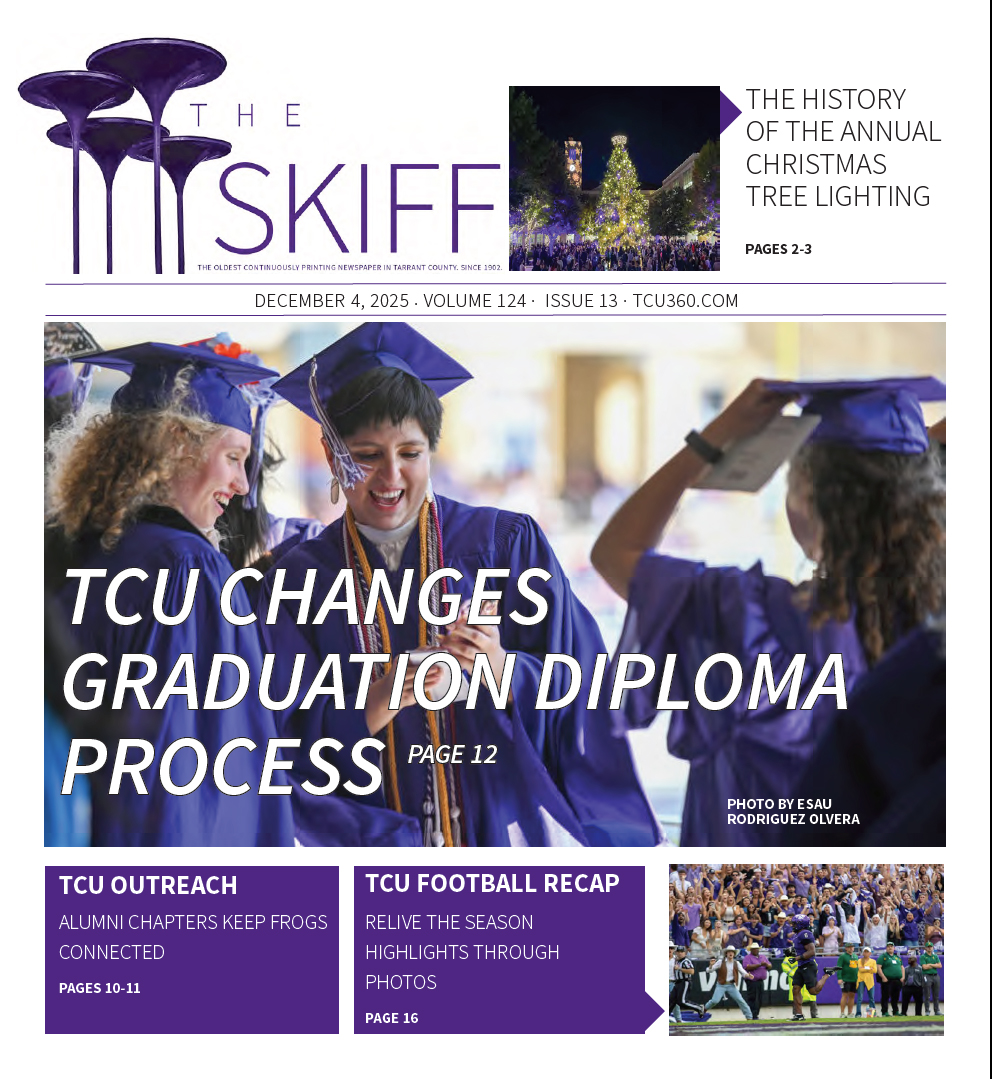Harrison building reflects Brite’s importance
Published Jan 20, 2012
The colonial colonnade and defining steeple of Robert Carr Chapel are symbols and reminders of TCU’s long, fruitful relationship with the Christian Church (Disciples of Christ). Students sing carols, dream of weddings and walk to and from classes beneath its shadow, yet may not see its context and the importance of the institution that lies behind it to the past, present and future of the university. A student who was interviewed for a Skiff article in January 2011 erroneously referred to the Brite Divinity School as “the religious department.” Brite is far more. It’s physical expansion demonstrates its commitment to coexist with TCU and to Brite’s positive reflection on the university and the lives of seminarians. Brite President Newell Williams and Chancellor Victor Boschini affirmed their relationship through the 2004 Joint Resolution on Continuing Affiliation and Services and must continue to affirm that relationship in the future. The Rev. Chris Wilson, a TCU and Brite alumnus and current Disciples of Christ minister in Arlington, described the seminary expansion as a long, necessary and intentional process with commitments from a range of donors. TCU must respond to the Harrison Building’s significance with an understanding of the background of Brite’s importance. While large public universities and elite private institutions carve their niche in scientific or medicinal research, graduate programs and armies of Nobel Prize winners, a small, southern liberal arts university must embrace its bond to the seminary. Harvard and Yale Divinity Schools have historical icons Ralph Waldo Emerson, Horatio Alger Jr. and Amos Alonzo Stagg. Union Theological Seminary graces the Manhattan streets next door to Columbia University. What can an expanding seminary do for TCU but good? A standard-bearer in issues of progressivism and academic integrity, Brite integrated its student body a decade before TCU. Today, Brite employs faculty of all races, creeds and sexual orientations while promoting a mission of moral leadership, intellectual rigor, inclusiveness and community involvement. The mutually reinforcing identity with TCU could not be, at its core, any stronger. The products of Brite’s purpose are its students, who are direct beneficiaries of the expansion. Will Brown, a first-year seminarian and a 2011 university graduate, said that the new technology and diverse classroom experiences “will really help us serve who we are called to serve.” He said the building “meets the current needs of the seminary, as opposed to those 60 years ago.” The accessibility and new range of options available to students brings instruction of preaching and theology into the 21st century. The effective studies and gainful pursuits of future ministers help the moral and personal direction of the religious in American society. The Christian Church (Disciples of Christ) lost more than half of its total membership from 1960 to 2002-04, according to statistics from demographia.com, corresponding with drops of varying sizes among the Evangelical Lutheran Church of America, the Episcopal Church, the United Methodist Church, the Presbyterian Church, Churches of Christ, the American Baptist Association and Conservative Baptist Association of America. These careful, moderated theological approaches are increasingly important voices and advocates for Americans in times of cultural and political polarization, division and distance. Ministers graduating and serving churches across the country from Brite truly are, according to the hymn, “the tie that binds our hearts in Christian love.” Next time the alma mater peals forth from the bell tower, the next time a bride and groom descend the steps of Carr Chapel, and the next time one passes by the new Harrison Building, reflect on Brite’s recent expansion as an asset and essential piece of identity and history for TCU. Pearce Edwards is a junior political science major from Albuquerque, N.M.


